Lever arm dysfunction (LAD) is a common cause of walking disability in children with cerebral palsy. Conditions such as internal hip rotation, rotational deformities between the femur and tibia, and varus deformities of the foot often increase with age.
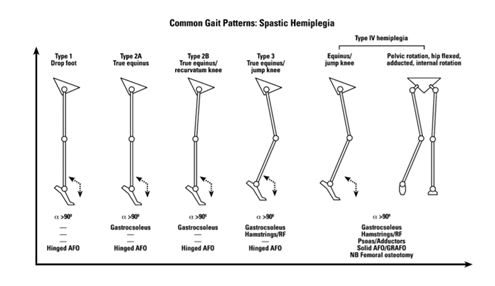
Fig. 1: Abnormal gait patterns in children with hemiplegia. Source: Rodda J, Graham HK. Classification of gait patterns in spastic hemiplegia and spastic diplegia: a basis for a management algorithm. European Journal of Neurology 2001; 8 (suppl 5): 98-108.
A study found that Demi Plie, a basic warm-up movement in ballet, can improve the range of movement of the hip joint, reduce the forward tilt of the pelvis, and improve the pelvis to hip movement angle.
The experiment above was performed using a NOKOV motion capture system recording different foot deviation angles of 30°, 60°, 90°, and 120°. The joint movements of the lower limbs were analyzed to predict the effect of Demi Plie movements on LAD in children with cerebral palsy.
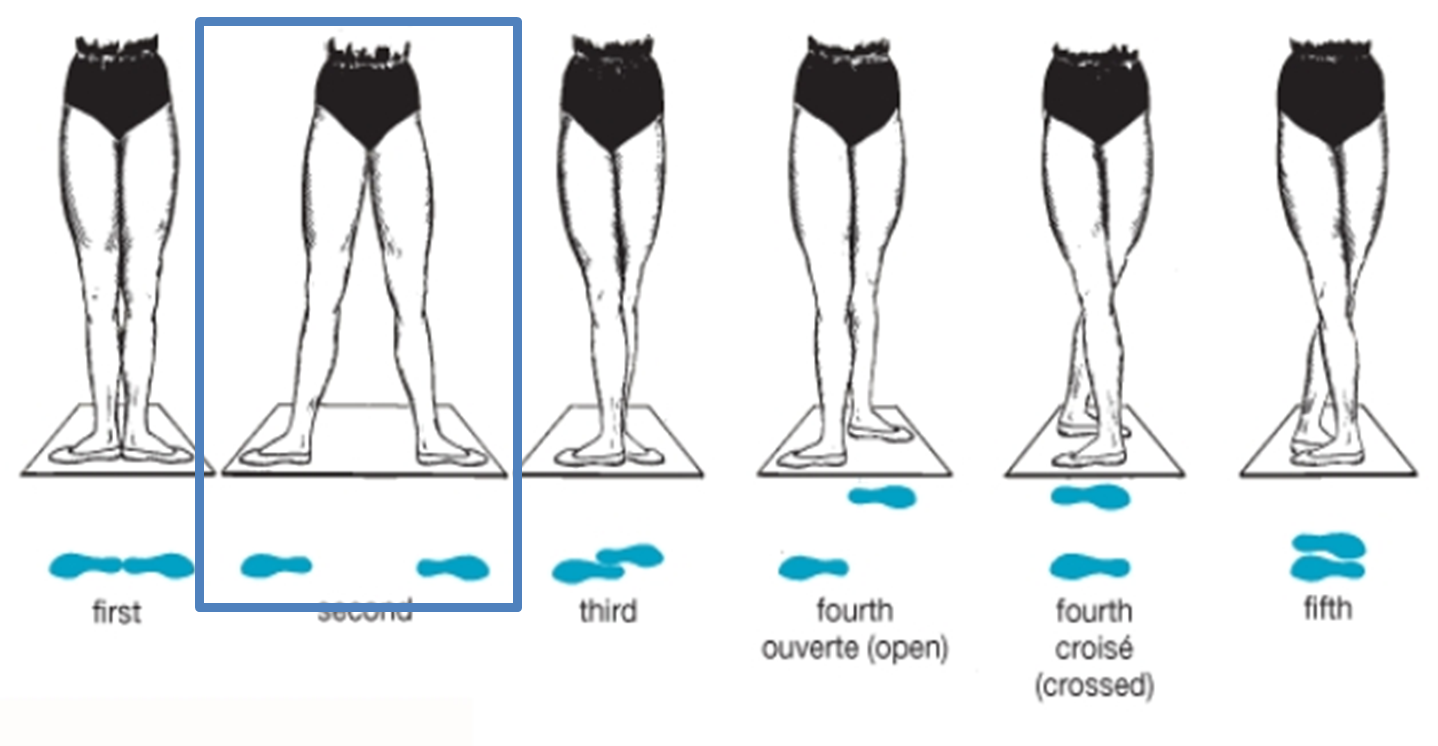
Fig. 2: Ballet feet positions (the second foot position is f in blue).
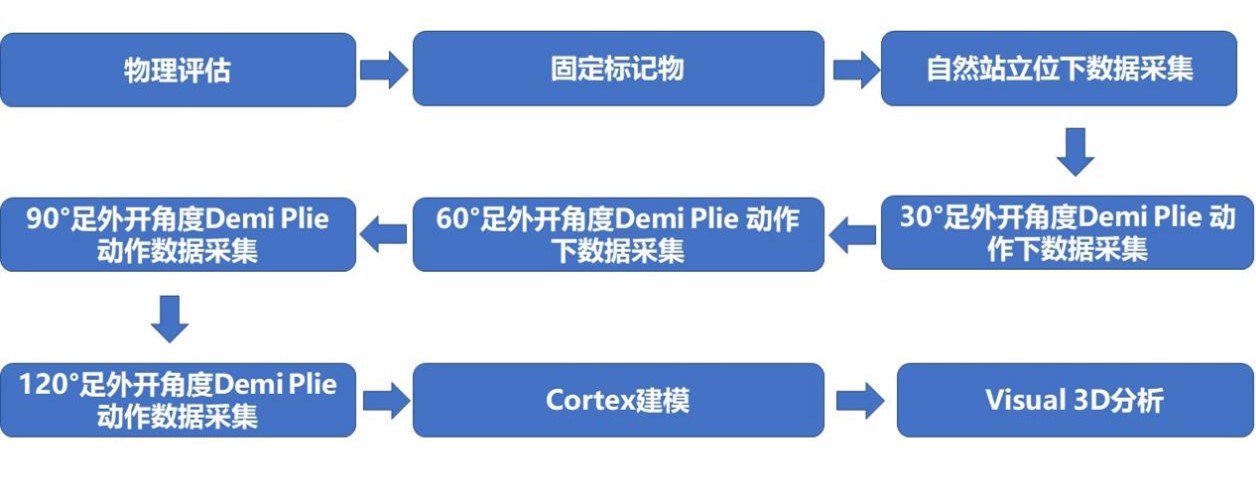
Fig. 3: Acquisition flowchart of a 3D motion capture system.
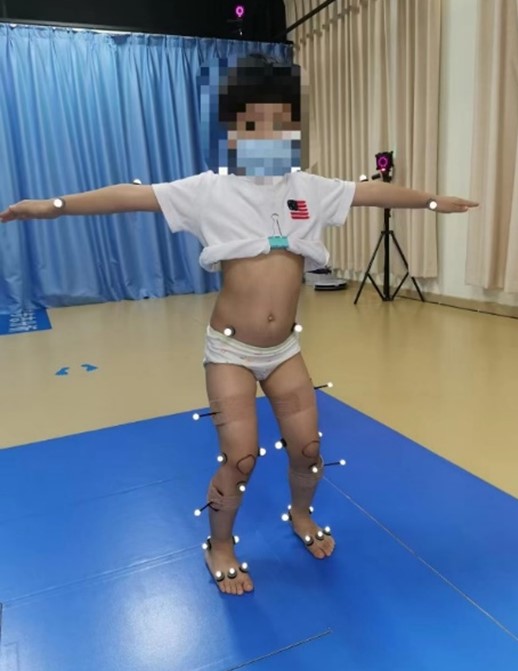
Fig. 4: Demi Plie movement recording setup.
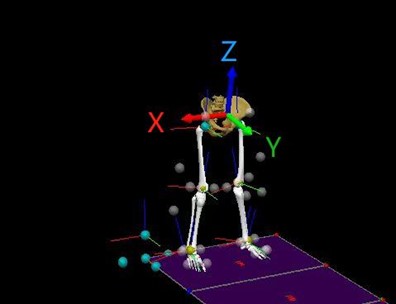
Fig. 5: The virtual coordinate system model. The x, y, and z axes represent the lower body joints on the sagittal (bending/extension), coronal (adduction/abduction), and horizontal (left/right rotation) planes.
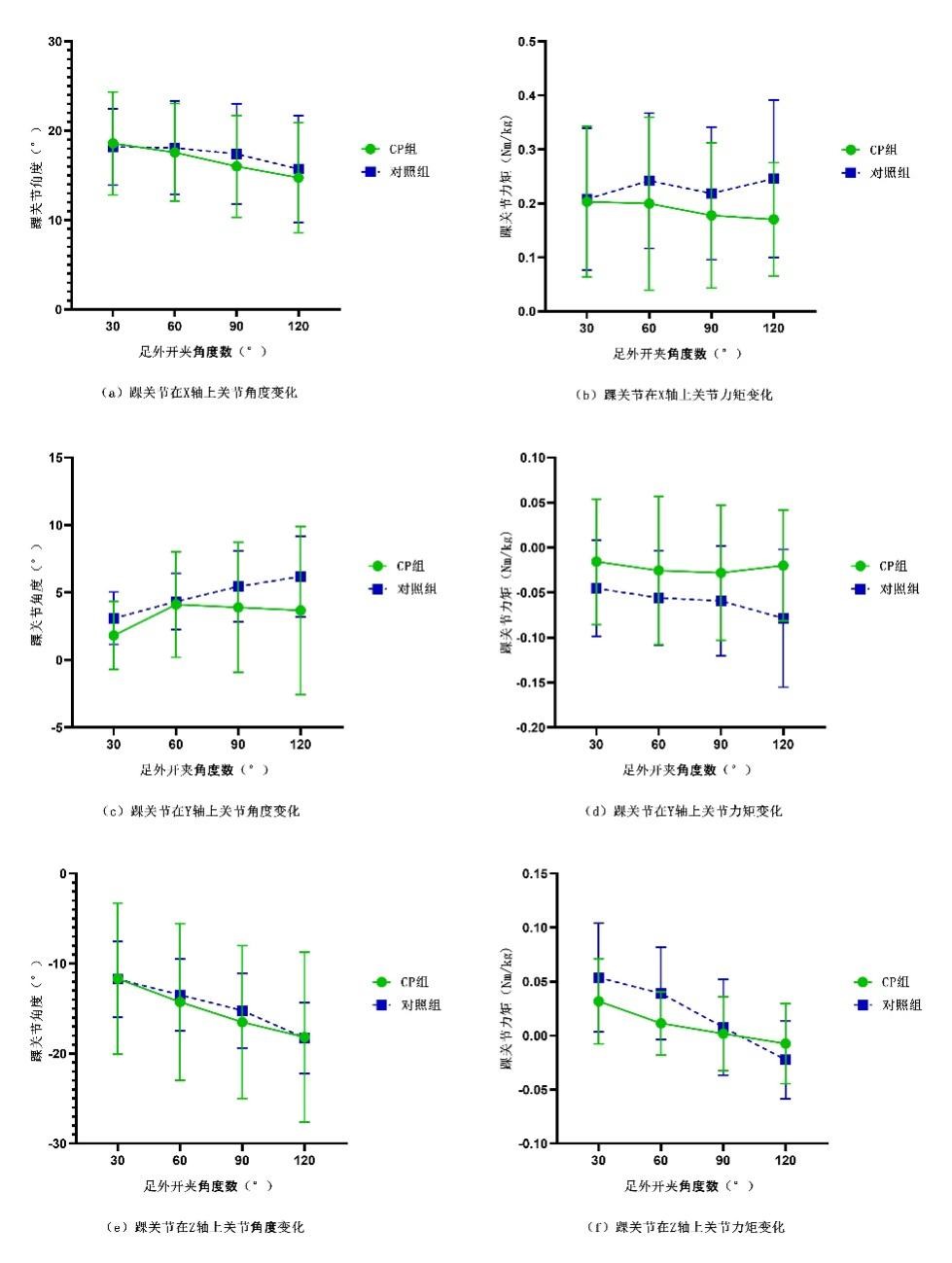
Fig. 6: Graphs of the x, y, and z axes of the ankle joint during the Demi Plie movement in children with cerebral palsy (yellow) and children without cerebral palsy (blue).
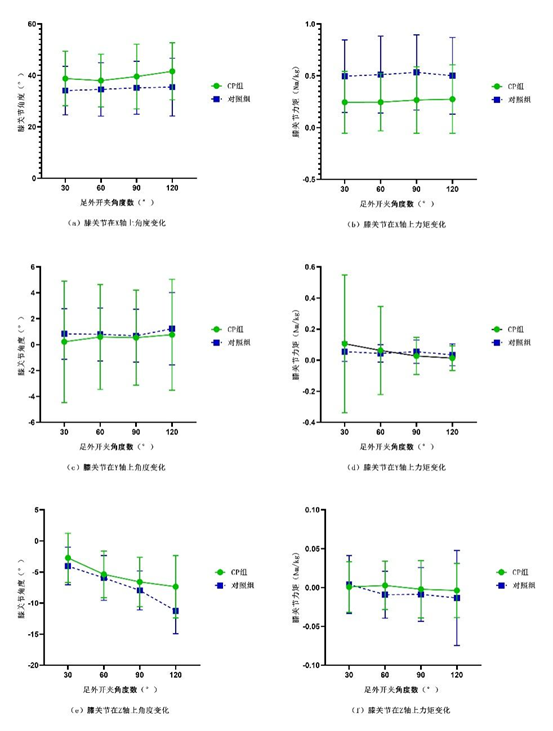
Fig. 7: Graphs of the x, y, and z axes of the knee joint during the Demi Plie movement in children with cerebral palsy (yellow) and children without cerebral palsy (blue).
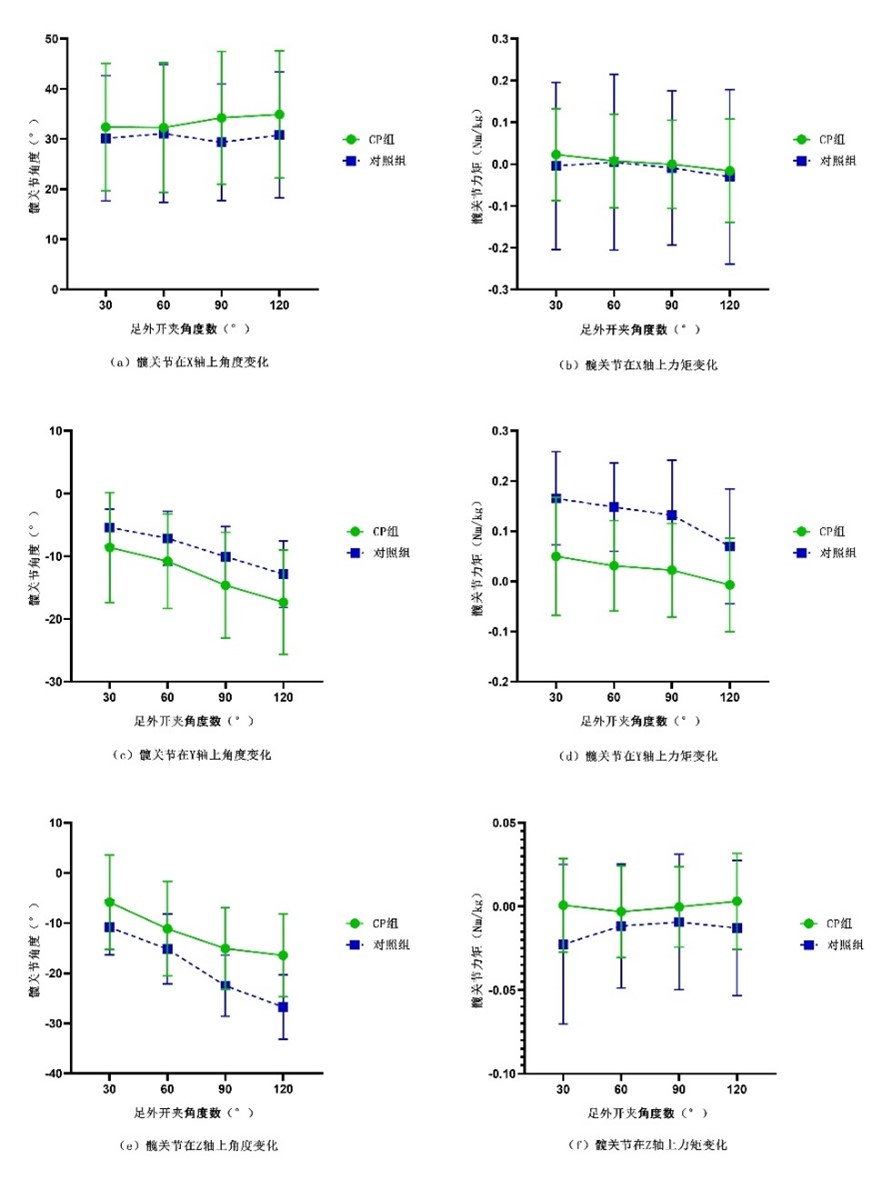
Fig. 8: Graphs of the x, y, and z axes of joint angles and joint torque during the Demi Plie movement in children with cerebral palsy (yellow) and children without cerebral palsy (blue).
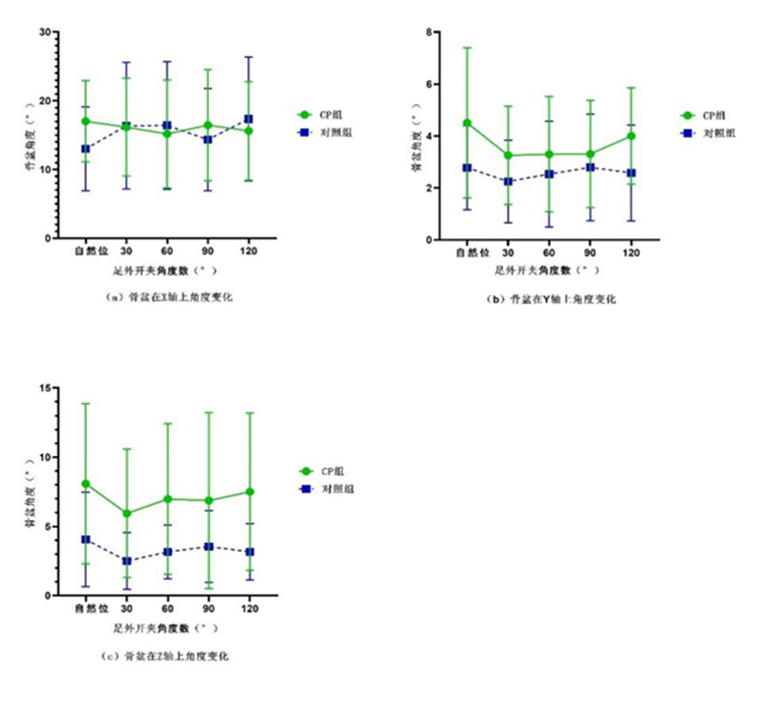
Fig. 9: Graphs of pelvis movement in the x, y, and z axes during the Demi Plie movement in children with cerebral palsy (yellow) and children without cerebral palsy (blue).
Analyzing the data, the researchers concluded that the Demi Plie movement improves femoral internal rotation, tibia internal rotation, and plantar flexion in children with cerebral palsy, but has no significant effect on their crouching gait or foot varus. The study also found that the Demi Plie movement was safest when performed at a 30° or 60° angle between the feet.
Currently, three-dimensional motion capture systems are used for the gait analysis of children with cerebral palsy. This technology allows clinical doctors and physical therapist to compare a patient’s gait model with that of a normal child and develop a personalized rehabilitation plan for each patient. As children’s rehabilitative medicine improves, rehabilitation strategies based on framework developed by the International Classification of Functioning, Disability, and Health will be promoted, including ballet dancing and other recreational activities. Three-dimensional motion capture systems will be instrumental to the development of these diverse rehabilitation strategies as a precise and objective movement assessment tool.
Bibliography:
1.Kedem P, Scher D M. Evaluation and management of crouch gait[J]. Current opinion in pediatrics, United States: 2016, 28(1): 55–59.
2 Blumstein G, Kay R M, Dorey F, et al. Prevalence of specific gait abnormalities in children with cerebral palsy revisited : influence of age , prior surgery , and Gross Motor Function Classification System level[J]. 2016: 79–88.
3 Coker E, McIsaac T L, Nilsen D. Motor imagery modality in expert dancers: an investigation of hip and pelvis kinematics in demi-plié and sauté[J]. Journal of dance medicine & science, 2015, 19(2): 63–69.
4 Gontijo K N S, Candotti C T, Feijó G D S, et al. Kinematic evaluation of the classical ballet step “plié”[J]. Journal of dance medicine & science ,2015, 19(2): 70–76.